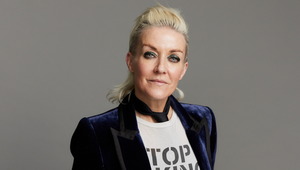
Fabric Five: Sustainable Trends Fuelled by the Younger Generation

Once again, the team at M&C Saatchi FABRIC brings us the FABRIC FIVE - five emerging hyper-passions that are growing in relevance as niche communities gain mainstream attention.
This month we unpack notable hyper-passions in the area of sustainability, no doubt fuelled by the growing consensus from younger generations that our current system is failing the planet.
1. #Yubbies - Young Urban Birders
When you think of a Birder, few would envision a smartphone-wielding 20-something, decked out in The North Face, scanning their local park to spot a Splendid Fairy-wren however today, more and more, reports suggest the birding community is becoming younger and more diverse.
“Drawn in by the visual seductions of Instagram, as well as a desire for community inflected by environmentalism” according to The Times, young urban birders (#Yubbies) have been flocking to their local green spaces to identify wild birds in their habitats - much like an IRL game of Pokémon.
Local councils are jumping on the trend in coastal neighbourhoods across Sydney, teaching residents how to create a garden sanctuary for small birds in their own private gardens. ‘Living Connections’ offers plants and free expert advice to local bird lovers to create healthy gardens where birds can thrive and enhance the local habitat.
What can we learn?
Today passions shape our personal brand, and can give us a professional advantage. Consider how your brand can connect to passions by providing functional and useful tools or opportunities to learn something new, that meet the needs and interests of your customer.
2. Political Pickling
While pickling has been in the zeitgeist for a few years now, what’s new is it’s associations with political activism against multinational supermarkets and conspicuous consumption.
The global Pickles market is predicted to hit USD 10.6 billion this year, and it is likely that it will reach a valuation of USD 12.6 billion by 2026 - led largely by Asia Pacific and primarily younger generations, that are embracing pickling to combine their interest in food, while reducing waste and their food budgets.
Knowledge about home-based preservation was previously borne out of necessity and reliant on the advice of your physical circle. Now, Facebook Groups, Reddit and Pinterest all serve as key tools of connection, influence and information for wannabe-picklers, with almost one in two foodies looking to the recommendations of their own networks when it comes time to make decisions and looking for inspiration.
What can we learn?
According to a report by Accenture, more than one in three shoppers choose a brand because it connects them to like-minded people and gives them a sense of community. As marketers we need to challenge ourselves to shift gears - from broadcasting our own messages, to facilitating conversation amongst our customers. Ask yourself, how can your brand authentically cultivate a community?
3. #balconygardening
Much like birding, the houseplant revolution has transformed the stereotype of the gardener. Today, keeping plants alive affords you social kudos, as a marker of mastering adulthood. There are 3.2 billion engagements on #PlantsofTikTok where millennials are sharing tips for budding “plant parents' tending to their photogenic fiddle-leaf figs and succulents.
Fuelled by this resurgence in gardening, this month the Chelsea Flower Show announced it will award balcony gardens for the first time in 108 years after a huge spike in the number of people interested in gardening over the last twelve months, a lot of whom are new home owners or renting in cities. This year, visitors will be able to admire five small balcony gardens, each of which resemble balconies on the side of a block of flats that will no doubt go on to be replicated across Instagram feeds, globally.
What can we learn?
It’s no mean feat for an organisation so steeped in royal tradition, to overhaul its establishment to cater to new audiences, but it’s a welcome reminder to challenge the status quo. What practices once deemed ‘too hard’ or trends thought to be ‘too niche’ should be revisited to stay relevant?
4. No Waste Kitchen
Whether it’s fuelled by the simple desire to make the most out of every visit to the supermarket, or you’re a passionate champion of the United Nations ambition to eliminate 50% of global food waste by 2030, the zero-waste movement is growing at pace in households across the world.
As an extension of the #FoodTok trend, hacks that help users to repurpose potato skins and find a new use for mango pits are dominating our news feeds and materialising in new social enterprise businesses such as Rub&Stub, a restaurant in Copenhagen that serves only surpluses of the food industry on the menu and The Future Food System Greenhouse, a zero-waste urban farm in Melbourne.
What can we learn?
As marketing teams continue to behave as publishers and build strategies to authentically show up in culture, even unlikely brands can lean into the zero-waste movement by empowering customers to share ideas, suggestions and innovations on how to minimise waste and reappropriate unwanted materials.
5. #ReuseIdea
It feels like another era entirely when the local milkman would deliver fresh supplies to your doorstep and at the same time, pick up empty bottles to be cleaned and refilled. Today, running in parallel to the zero-waste kitchen movement we are witnessing a new generation revisiting this age-old practice who are passionate about reusing, refilling and repairing.
At an enterprise level, some companies are already designing sophisticated solutions such as Loop which offers a new system of high-quality packaging that can be returned and refilled again and again. Local communities are ramping up their involvement, with more than 1,500 Repair Cafés, a concept born a decade ago in Amsterdam, popping up around the world.
Where can we learn?
This hyper-passion is bubbling away on YouTube, Reddit and Facebook Groups with tips and tutorials for reimagining a new life for packaging and products. The challenge for marketers is how we can own our own narrative and produce high-quality utility content on how to extend the life of products.














